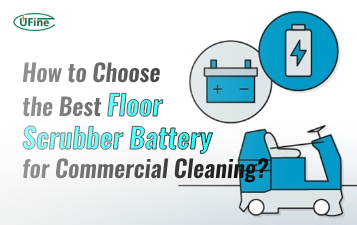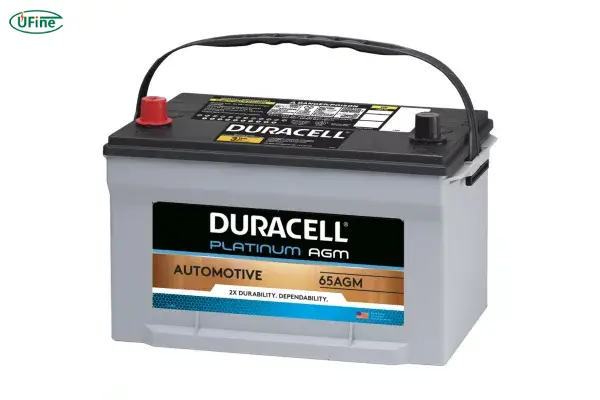If you own a truck, SUV, or heavy-duty vehicle, finding a powerful, reliable battery is essential. Among the many options available, the Group 65 battery stands out as a top choice for drivers seeking long-lasting power, especially in vehicles with high electrical demands. But what makes this battery so special, and is it the right fit for your needs?
In this comprehensive guide, we’ll take a deep dive into the world of Group 65 batteries. By understanding their voltage, capacity, types, and how they perform in real-world applications, you’ll be well-equipped to make an informed choice. Whether you’re a long-haul trucker or an off-road enthusiast, this guide will help you get the most out of your battery.
Part 1. Understanding group 65 battery
A Group 65 battery refers to a specific size of battery, standardized by the Battery Council International (BCI). The “65” in the name denotes the physical dimensions of the battery, rather than its voltage or power output. These batteries are designed for larger vehicles, such as trucks, SUVs, and some industrial equipment, where high power and durability are essential.
One of the primary reasons people opt for a Group 65 battery is its ability to handle heavy electrical loads. These batteries are built for vehicles with higher energy demands, such as those with numerous electrical systems, larger engines, or vehicles frequently used in harsh conditions like extreme cold or rough terrain.
Advantages:
- High Cold Cranking Amps (CCA): Perfect for vehicles that need reliable starting power in cold weather.
- Durability: Built to withstand the vibrations and shocks common in trucks and heavy-duty vehicles.
- Longer Lifespan: Especially when using AGM (Absorbent Glass Mat) or lithium-ion technology, Group 65 batteries can last longer than traditional lead-acid batteries.
Disadvantages:
- Weight: These batteries are heavier than standard car batteries, which can make installation more challenging.
- Cost: Depending on the type (especially AGM or lithium-ion), Group 65 batteries can be more expensive than other options.
While the benefits often outweigh the drawbacks, it’s essential to know if the added weight and cost are justified for your specific vehicle needs.
Part 2. Voltage
Most Group 65 batteries operate at a standard 12 volts, which is typical for automotive batteries. This voltage is crucial because it provides enough power to not only start the engine but also to keep the vehicle’s electronics functioning properly.
For heavy-duty vehicles with advanced electrical systems, having a consistent and stable voltage is essential. From powering headlights and infotainment systems to running larger electrical systems like winches or towing setups, the 12V Group 65 battery ensures reliable operation.
Part 3. Capacity
The capacity of a battery indicates how much energy it can store and deliver over time. For a Group 65 battery, the typical capacity ranges between 70Ah to 90Ah (amp-hours). This capacity makes them ideal for vehicles with high energy demands, whether it’s running powerful engine systems or maintaining long periods of accessory use (like lights or stereo systems) without the engine running.
A higher capacity ensures that you won’t face issues like battery drain, especially if you’re someone who frequently operates electrical devices while the vehicle is off. This makes it perfect for outdoor enthusiasts who use their vehicle for off-road camping or tailgating, where the battery might be required to power accessories for extended periods.
Part 4. Size
The physical size of the battery is another defining feature. A Group 65 battery typically measures about 12.06 inches in length, 7.5 inches in width, and 7.56 inches in height. This size fits into the battery compartment of larger vehicles, but it’s essential to double-check your vehicle’s specifications before purchasing one.
The importance of the right size cannot be overstated. If a battery is too small or large for the compartment, it can lead to fitting issues, possibly causing damage to the terminals or the battery case itself. Ensure that the Group 65 fits your vehicle’s designated space to prevent any installation problems.
Part 5. Types
Group 65 batteries come in a few different types, each designed with specific materials and features that suit different vehicle needs. Here are the main types:
1. Flooded Lead-Acid Batteries:
- Description: The most traditional type, where the battery cells are filled with liquid electrolytes.
- Pros: Affordable and widely available.
- Cons: Requires regular maintenance, including topping off the water levels, and is more prone to spills or leaks.
2. Absorbent Glass Mat (AGM) Batteries:
- Description: A more advanced type of lead-acid battery that uses a glass mat to absorb the electrolyte.
- Pros: Maintenance-free, spill-proof, and more resistant to vibration.
- Cons: More expensive than flooded lead-acid.
3. Lithium-Ion Batteries:
- Description: Uses lithium chemistry to deliver power, offering the highest performance.
- Pros: Lightweight, long-lasting, and offers excellent energy efficiency.
- Cons: The most expensive option but also the longest-lasting.
AGM VS Lithium VS Lead-Acid Battery: Comprehensive Comparison
For those who prioritize longevity and maintenance-free performance, AGM and lithium-ion batteries are the best choices. On the other hand, flooded lead-acid batteries may appeal to budget-conscious buyers who don’t mind a bit of maintenance.
Part 6. Weight
Group 65 batteries are heavier than standard automotive batteries, typically weighing between 40 to 60 pounds. The exact weight will vary based on the type of battery, with flooded lead-acid being on the heavier side and lithium-ion versions being much lighter.
This weight adds to the overall durability of the battery, helping it withstand the vibrations and impacts experienced in heavy-duty vehicles. However, it’s important to consider this when installing or replacing the battery, as the extra weight can make the process more difficult.
Part 7. Price
Pricing for Group 65 batteries varies widely depending on the type and brand. Here’s a general breakdown:
- Flooded Lead-Acid: $100 to $150
- AGM Batteries: $150 to $250
- Lithium-Ion: $300 to $500 or more
While flooded lead-acid batteries are the most affordable, AGM and lithium-ion options offer better performance, longer lifespan, and reduced maintenance, making them a better investment for long-term users.
Part 8. Famous Brands
Here are five of the most trusted brands that produce high-quality Group 65 batteries:
- Optima: Known for high-performance AGM batteries.
- Odyssey: Offers long-lasting, premium AGM options.
- DieHard: Produces reliable batteries with both lead-acid and AGM variants.
- Exide: Offers a wide range of automotive batteries with excellent warranties.
- NorthStar: Focuses on high-end AGM batteries with a reputation for durability.
When purchasing a Group 65 battery, sticking with reputable brands ensures you get the best performance and warranty coverage.
Part 9. Applications
Group 65 batteries are designed for heavy-duty applications. Here are the most common uses:
- Trucks and SUVs: These batteries can handle larger engines and more demanding electrical systems.
- Marine Applications: Ideal for boats that require reliable, consistent power.
- Industrial Equipment: Used in heavy machinery that needs a powerful energy source.
- RVs and Off-Road Vehicles: Provides power for extended periods without the engine running.
Real-world application: Whether you’re a trucker needing dependable power for long hauls or an outdoor enthusiast using your vehicle to power camping gear, a Group 65 battery can meet your needs without worrying about power loss.
Part 10. How do I know my battery group size?
To find the right battery group size for your vehicle, consult your owner’s manual. Alternatively, you can check the label on your current battery or use online tools provided by retailers that match battery sizes to specific vehicle makes and models.
Part 11. How long can group 65 battery last?
The lifespan of a Group 65 battery depends on the type and how well it’s maintained. Here’s an average breakdown:
- Flooded Lead-Acid: 3 to 5 years with proper care.
- AGM: 5 to 7 years, with less maintenance required.
- Lithium-Ion: 8 to 10 years or more, with the longest-lasting performance.
Proper maintenance, such as cleaning the terminals and checking the charge, can help extend the lifespan, especially for lead-acid batteries.
Part 12. Conclusion
Choosing the right Group 65 battery can significantly impact your vehicle’s performance and reliability. Whether you’re driving a heavy-duty truck, enjoying off-road adventures, or powering industrial equipment, the right battery ensures consistent performance and longevity. By understanding the differences in types, capacity, voltage, and lifespan, you can confidently select the best option for your needs.
Investing in a quality Group 65 battery is not just about powering your vehicle—it’s about ensuring that every journey, every workday, and every adventure runs smoothly, no matter the conditions.
Related Tags:
More Articles

How to Choose the Best Floor Scrubber Battery for Commercial Cleaning?
Selecting the ideal floor scrubber battery ensures a long runtime, rapid charging, and minimal maintenance for efficient commercial cleaning operations.
Battery for Blower vs Battery for Leaf Vacuum: Which One Should You Choose?
Battery for blower vs leaf vacuum—learn the key differences in power, fit, and runtime to choose the right battery for your outdoor tool needs.
How to Choose the Right Battery for Blower?
Choosing the right blower battery? Consider voltage, capacity, chemistry & usage. This guide helps match the best battery for peak performance.
How to Choose the Best Insulated Battery Box for Lithium Batteries?
Choosing the Best Insulated Battery Box for Lithium Batteries? Discover key factors such as size, material, and safety for optimal protection and performance.
7 Critical Elements on a Lithium Battery Shipping Label
What must be on a lithium battery shipping label? Learn 7 key elements to ensure safety, legal compliance, and correct handling across all transport modes.




